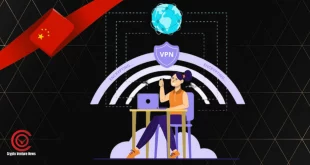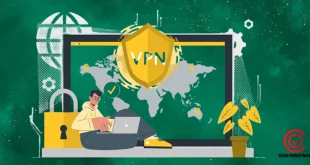Blockchain is a decentralized technology that is used to safeguard the privacy and security of online transactions and is generally related to digital currencies like Bitcoin. However, this technology can be applied to all types of virtual exchanges. As per the latest studies, new avenues have opened up in blockchain copyright protection management of applications.
Having stated the potential of blockchain copyright protection, there are still several open issues that require to be further analyzed and researched for creating workable copyright protection applications that can completely benefit from the utilization of the blockchain technology as the use of blockchain intellectual property protection has shown great results. The blockchain technology can also be used for blockchain copyright registration of unidentified IPs.
Blockchain Copyright Protection Making Huge Difference
Enter the blockchain technology, which has actually been prevailing for close to ten years. Distributed ledger technology which is also known as blockchain technology is the underlying force of cryptocurrency.
Normally, blockchain technology has been employed in the finance sector, but there are numerous chances that include helping creators to protect their copyrights by formulating an immutable database of sources, dates of registration, and contact data. This makes it convenient for legitimate companies to find the author of the piece and transmit remuneration. It is also convenient to check who has been downloading the work. The presence of evidence of usage enables creators to include courts of law in the attempt to get paid using their work.
Presently, there are various entities that use the blockchain technology for registering and protecting copyrights that including Pixsy, TinEye, Ascribe, Binded, Mediachain, and Proof of Existence. Through these platforms, individuals are allowed to not only find these masterpieces but also use and trade work in a way that does not violate the creator’s rights. So as long as the users of the blockchain are strong and the data in question is distributed within the chain, the data carried by the blockchain is meant to be durable, be a highly dependable source, and have longevity.
NFT And Blockchain Copyright Protection
When we are talking about blockchains, why not take into account the exposure of NFTs. An NFT (non-fungible token) is a unique piece of data that is kept on a blockchain. More prominently, NFTs are digital files like videos, photographs, or audio files that can be sold and bought with digital currency. In many scenarios, NFTs are large files and, hence, a link to the actual video, photo, or audio file is what is kept on the blockchain rather than the actual piece of artwork.
This growing popularity of NFT has led some to question the role that copyright law will play in the protection of this new type of artwork.
While NFTs are comparatively new and maybe an unfamiliar type of art, the blockchain copyright protection will treat NFTs copyrights the same as any other normal artwork. If an artist formulates a new piece of artwork, they will automatically obtain a copyright of that new artwork. There are certain rights that are obtained by a copyright owner automatically upon the formation of a copyrighted work. A copyright owner has complete rights to reproduce the work, distribute copies of the work, and prepare derivative works. In the case of smart contracts copyright, the author has complete rights to his smart contacts. Thus, a copyright owner has complete rights to make an NFT based on an original piece of artwork as
“creation of an NFT can be categorized as a copy or even a derivative of the original work.”
A Gap In The Blockchain Copyright Protection
Because of the development in the distribution of audiovisual content via P2P (peer to peer) file sharing and online platforms like copyright protection, content scrutiny, and piracy tracing are increasingly more pressing for the owners, distributors, and producers of content. As per the researchers who encountered such issues, crypto copyright protection is an ideal option for handling distribution, tracing sources of piracy, and also getting payments upon the usage of contents.
However, despite the boom in this industry and the potential of this technology, the latest study highlights the fact that there is still a small quantity of blockchain copyright protection systems. As per research,
“This points toward a research gap. To fill this gap, we propose a taxonomy that integrates technical aspects and application knowledge and can guide the researchers towards the development of blockchain-based multimedia copyright protection systems.”
Comparing Blockchain Copyright Protection
For addressing this drawback, the researchers reviewed the scientific literature, evaluated 18 blockchain copyright protection systems, and compared them systematically. They studied dimensions such as whether they were public or private networks and which virtual protection techniques were utilized, for instance, digital watermarking or encryption. They also looked at the performances with respect to scalability, their ability to prevent cyberattacks, their response time, and also their data storage capacity.
Their results made it possible to find out some of the gaps in the research that will be required to be filled for implementing the blockchain copyright protection. They stated general drawbacks like bad interoperability because of the lack of universal standards and the scarcity of models for proof of concept validation or even conflict resolution. At the same time, they also point out the existing problems related to the design of the multimedia content protection systems that can support the technology of blockchain when including technological advances and security guarantees or distributed systems that are accepted by all associated parties.
These are wide outlines that are designed to enhance the usability of blockchain technology in a sector that has a great potential for growth, but in the case of the researchers, the future success will rely on other factors that are related to technology like “scalability, reliability or market adoption, that are difficult to foresee.”
Wrapping Up
There are infinite chances for artists and creators of any caliber with respect to the future of blockchain technology. By employing a mechanism that connects the data associated with their work to other pieces of data from its inception, artists utilizing blockchain can potentially safeguard their intellectual property from cyber theft. While there is still much to be explored regarding this potentially blockchain copyright protection system, there is no question that it has the ability to revolutionize the state of copyright law as we know it.
- AI Blockchain Projects: 8 Effective Ventures To Know Now - 03/08/2024
- Hyperledger Fabric: Why Has It Become So Famous? - 03/08/2024
- Ethereum Name Service: An Easy Step-By-Step Guide For You - 03/08/2024
 Crypto Venture News One stop Crypto Track Down
Crypto Venture News One stop Crypto Track Down 






